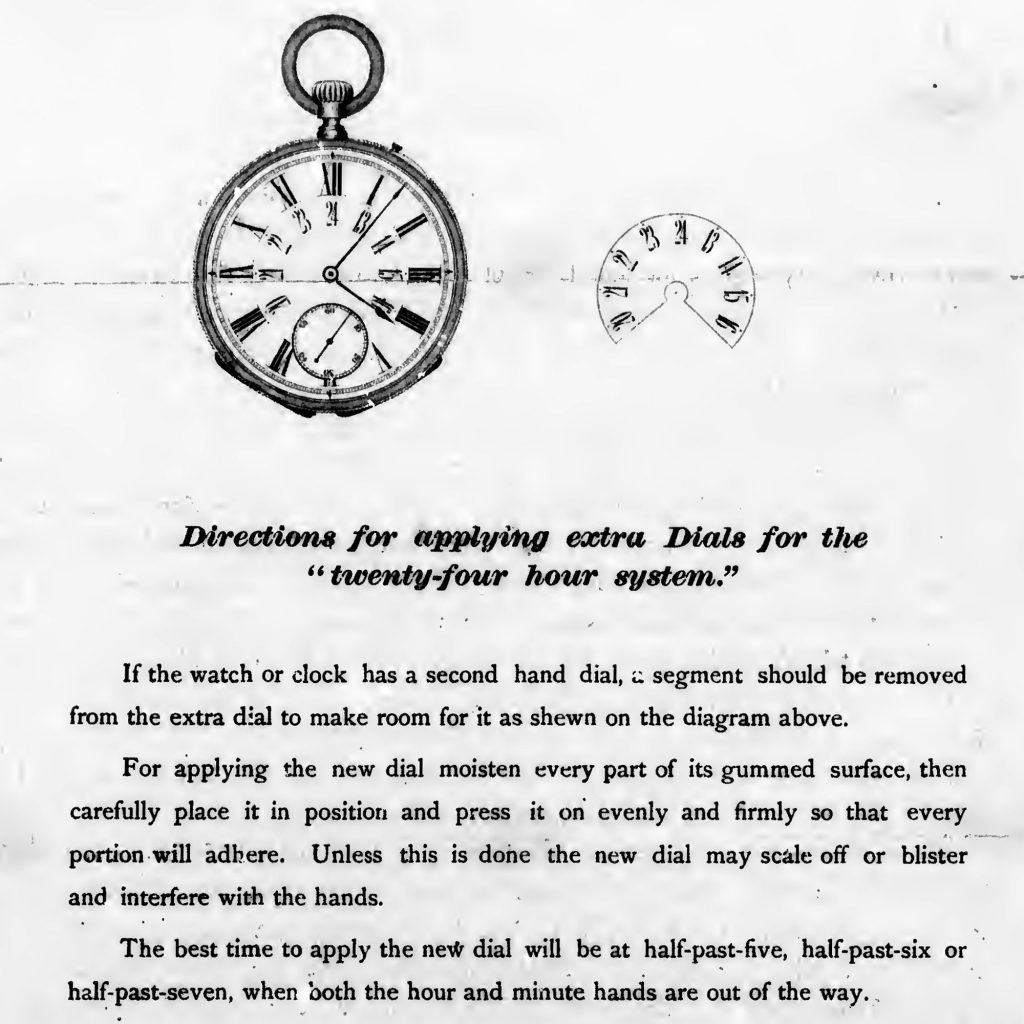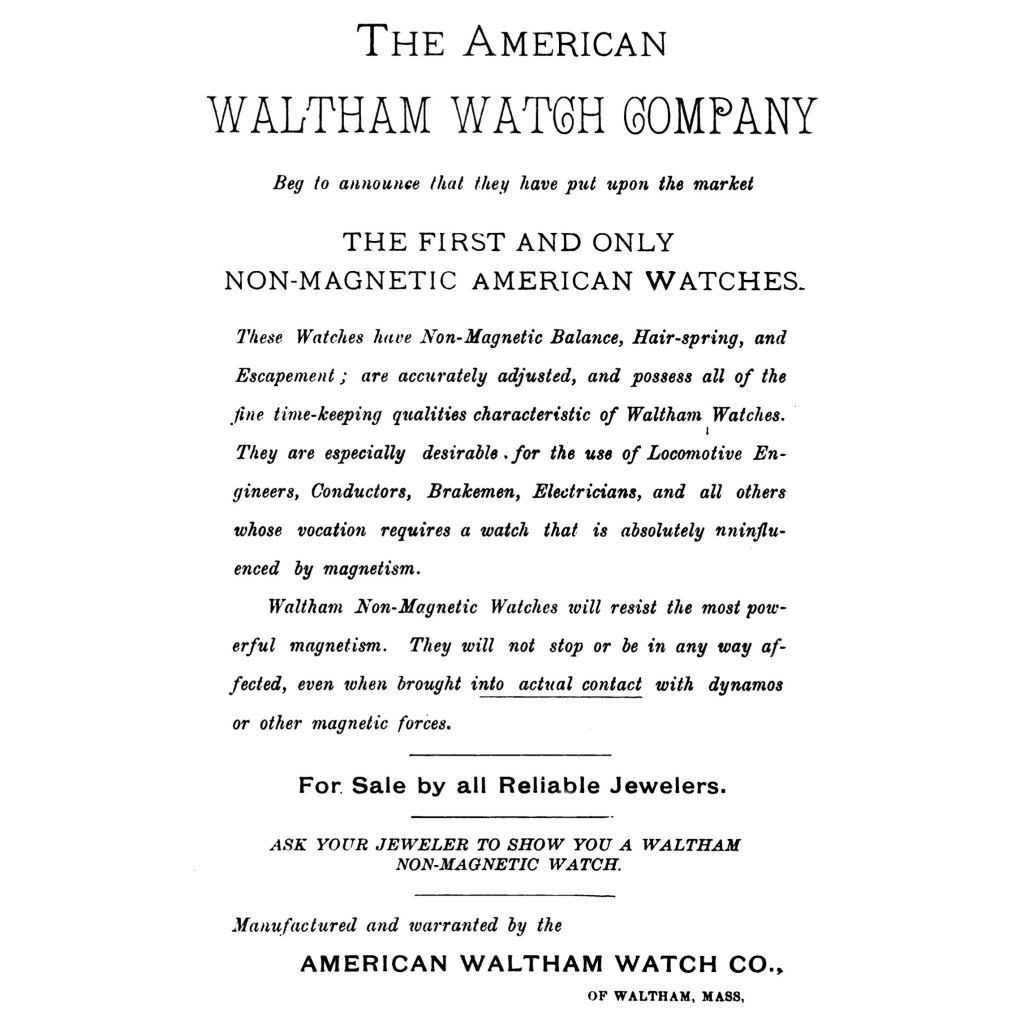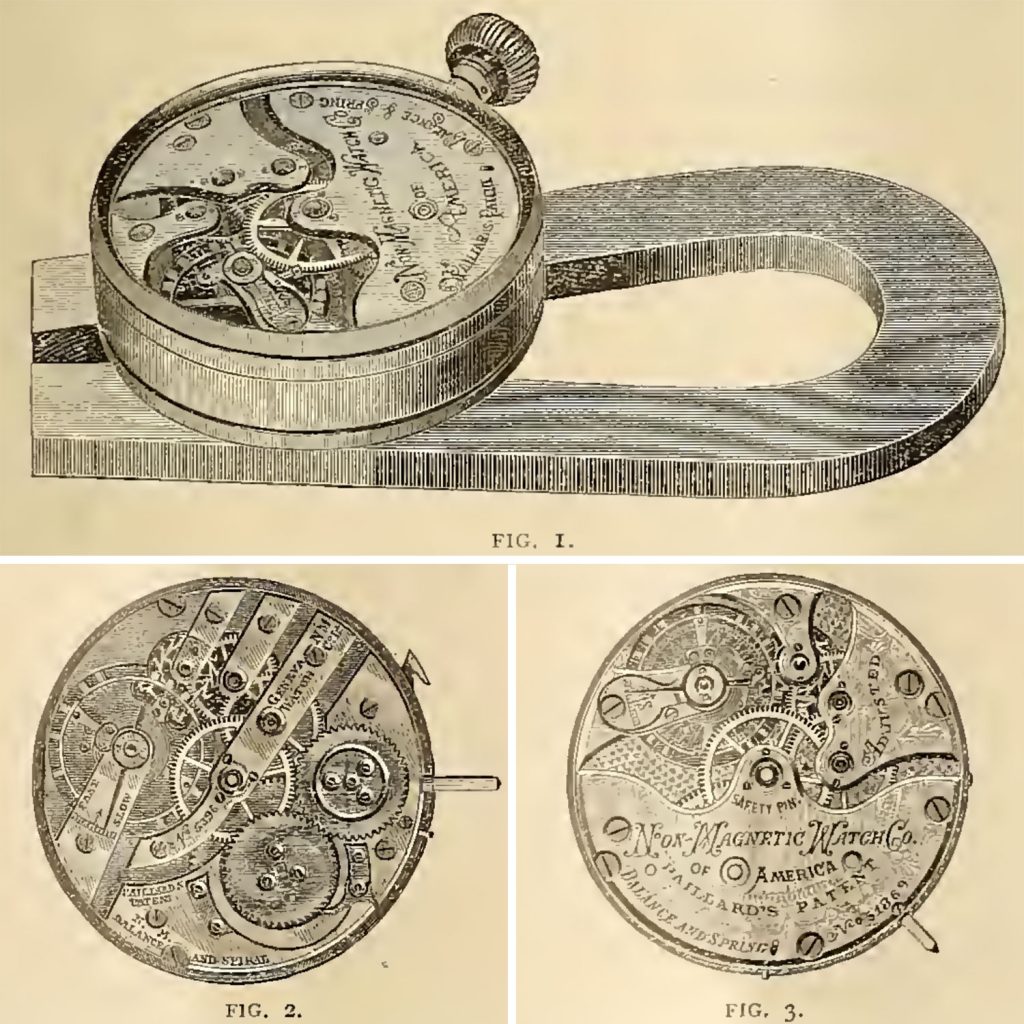Adoption of the 24-Hour Standard Time System on Canadian Railroads
In June 1886, the Canadian Pacific Railway Company established new requirements for dials, specifying that the figures 13 to 24 must accompany the conventional hour indicators, aligning with the newly-adopted 24-hour standard time system.
Small paper dials featuring the “new afternoon hours” were issued to adapt older dials in order to comply with the new requirements.
In a letter written by the Vice President of the Canadian Pacific Railway, the company provided information about the change and direction on how to apply the paper dial to the center portion of existing dials.

This 24-hour standard was generally adopted by railroads in Canada, and many required the 24-Hour Division Dial as a result. Despite a campaign by the American Society of Civil Engineers supporting the adoption of similar measures in America, most major lines in the United States retained the 12-Hour scheduling convention.
In a report published in January 1887, the American Society of Civil Engineers proclaimed the old notation was an ancient convention that required reform:
“The practice of so dividing and subdividing the day is very old, and centuries back it doubtless answered all the purposes of man. The conditions of the human race in the more advanced communities are, however, greatly changed, and the old practice of halving the day is becoming every year more and more inconvenient, and will soon become intolerable. Beyond its claim to antiquity, the custom has nothing whatever to recommend it… It is held that there is no necessity for dividing the day into halves; that the distinction made, between the 12 hours before noon and the 12 hours which follow noon, is awkward and inconvenience, and that the expressions ante meridian and post meridian, or their contractions, A.M. and P.M., should be abolished, and a more simple notation substituted.”1887 Report by American Society of Civil Engineers



